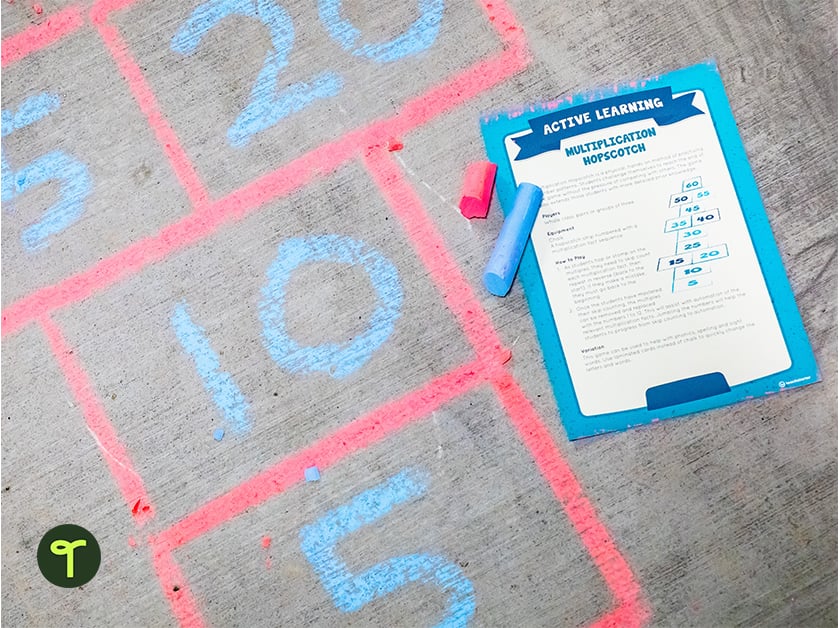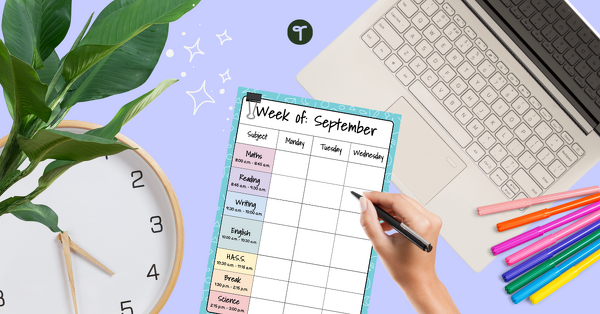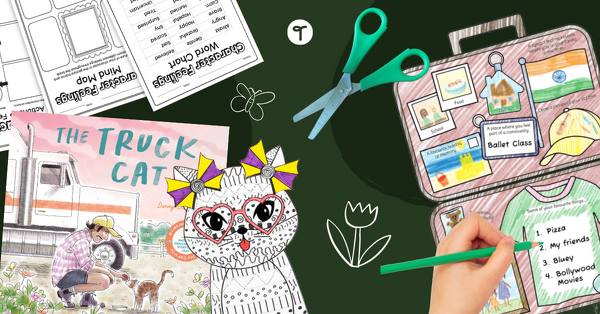These days playing games in the classroom is an integral part of the learning process. We know that kids learn through play, and the research is piling up that proves the value of classroom games for students as it makes learning concepts some kids might otherwise resist into something fun and irresistible. Gameplay in the classroom has become similar to parents hiding broccoli in their kids’ hamburgers, and it’s working.
From connecting kids to the material they’ve learned to providing rewards and motivation, you know there are benefits to classroom games. But what’s the science? How can games help students learn, and what’s the real value of games in education? The teachers on our teacher team did a deep dive into the research of game-based learning to find out what’s really going to work in your classroom.
Read on for some tips to help you increase student engagement with a little bit of gameplay!
Short on time? Head straight to our teacher team’s favorite printable games!
What Are the Benefits of Games in the Classroom?
If you’re anything like the teachers on the Teach Starter team, you love knowing the ins and outs of why something works in your classroom. There’s been a lot of research into learning through play and how to build the best classroom games for students, so this is just the tip of the iceberg. Still, there’s some pretty solid proof of the value of games in education from maths to social and emotional learning.
More Motivation
Looking to motivate your students? Bring out the games!
Studies show that playing games in the classroom can increase overall motivation. Students become more motivated to learn, pay attention, and participate in-class activities. They can also be a great classroom management tool, helping to motivate a class. One important thing for you to keep in mind: A 2011 study completed by researchers in the United Kingdom found games in the classroom provided more motivation if the learning was the playful part and not just a side note to the activity.
Self-Esteem Boosting
There’s often a fair amount of negativity around digital gaming — loner in his mom’s basement stereotypes are rampant, albeit unfair.
But harnessing kids’ love of video games for use in the classroom with games like Minecraft that can be incorporated directly into a lesson can have a powerful effect on kids’ self-esteem. In one Australian study, for example, researchers found that playing video games in the classroom was tied to students’ sense of pride and emotional connectedness to their peers — although we should note that this seemed more prevalent in boys than in girls.
Student Attentiveness
Did you know that playing games helps improve student attentiveness? As games can move quickly, a student needs to be alert and attentive for extended periods, and a study by researchers at the University of Wisconsin in the United States found games actually benefit students by helping them shape their attentiveness and training the brain in how to learn.
Using different instructional approaches in the classroom, such as playing games, enables students to encounter the content in various ways, making it easier for them to pay attention after the activity has ended.
Explore our teacher team’s favourite active games that get students up and moving and help increase focus!
Problem-Solving
When Taiwanese researchers looked at digital game-based learning for kids in a study published in the journal Computers & Education in 2012, they found that kids who designed their own cities using simulation games showed stronger problem-solving skills than peers who learned about cities in more traditional ways. The study isn’t the only one to find that gameplay in education can enhance kids’ problem-solving skills. Another study completed at the University of Manchester in 2016 had similar results — the small study concluded that ‘playing interactive educational games may have a positive impact on children’s problem-solving skills and engage them in advanced mathematical thinking.’
Language Development
Kids develop language when they encounter it — it’s why reading is such a powerful vocabulary builder — and that includes playing games in the classroom. In fact, a study by American researchers found a game doesn’t even have to be language-focused for it to enhance language for kids in primary and secondary school.
Increased Class Cooperation
Studies show kids as young as 3 enjoy working in teams vs individual activities, but you don’t need us to tell you that getting kids to work together smoothly is not always easy. Gameplay can go a long way toward building their cooperation skills as researchers at Nottingham Trent University in the United Kingdom found. Games in the classroom allow students to learn how to work together as a team, take turns, build respect, listen to others and play fairly.
Learning From Mistakes
As much as games in the classroom are about learning a concept, they’re also about learning from what goes wrong, which gives students both the problem-solving development we already mentioned and the social-emotional benefits too. As Stanford researchers point out, kids learn to abandon the game, even when they’ve lost.
Take your class on digital adventures with these fun escape room activities!
Memory Workout
We often think of playing brain games as a means for older folks to keep their memories in shape, but that benefit extends to kids too. Several studies have shown that video games, in particular, actually help kids build up their memories — and the benefits last well into adulthood!
Reaching Them on Their Level
Today’s kids live in a digital world — it’s why they’re often called digital natives. They’re used to a gamified experience at every turn, and research has shown games in the classroom help relate to digital natives in a language they understand.
Kids Want to Learn
Yes, this is a simplistic way to put it, but the research is solid. Studies from as far back as 1992 show that simply re-working a lesson as a game makes kids more receptive to learning a concept.










Comments